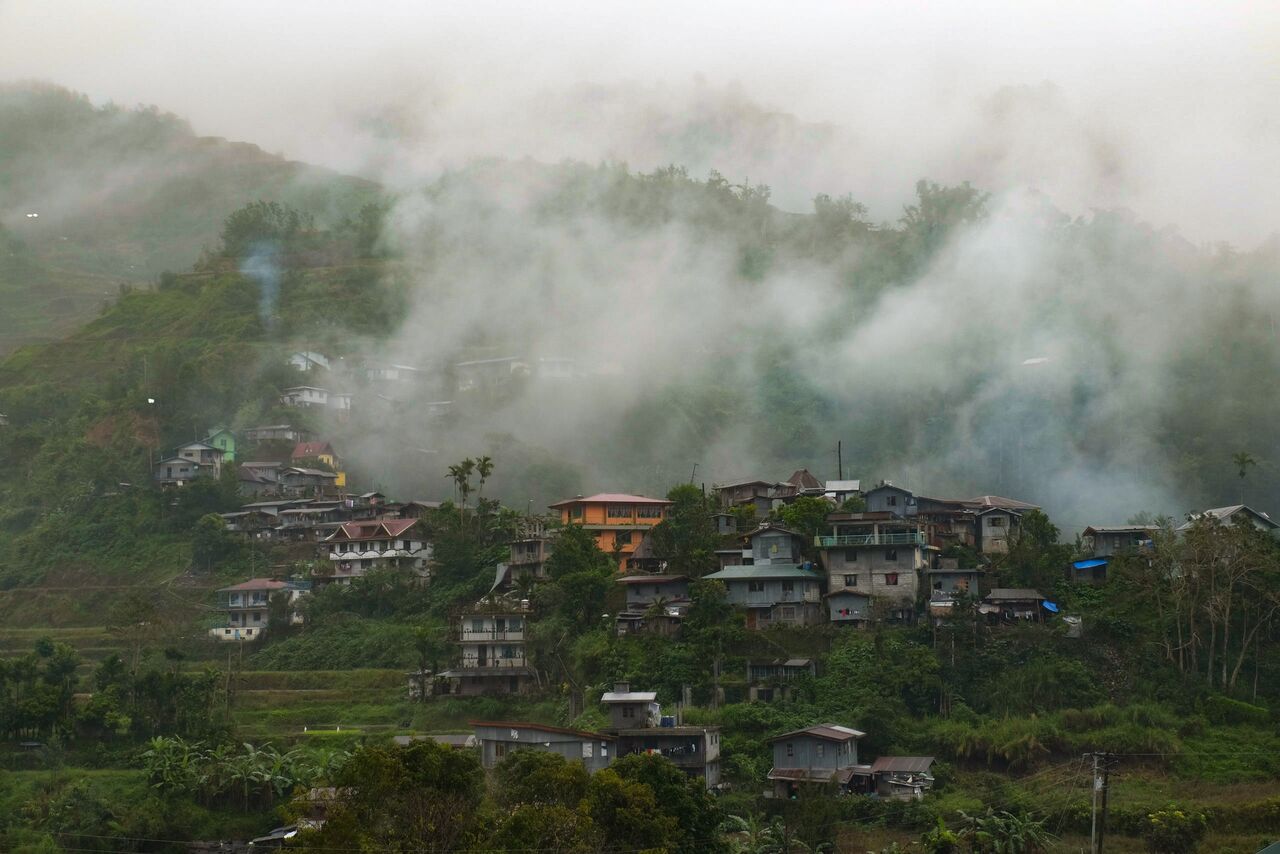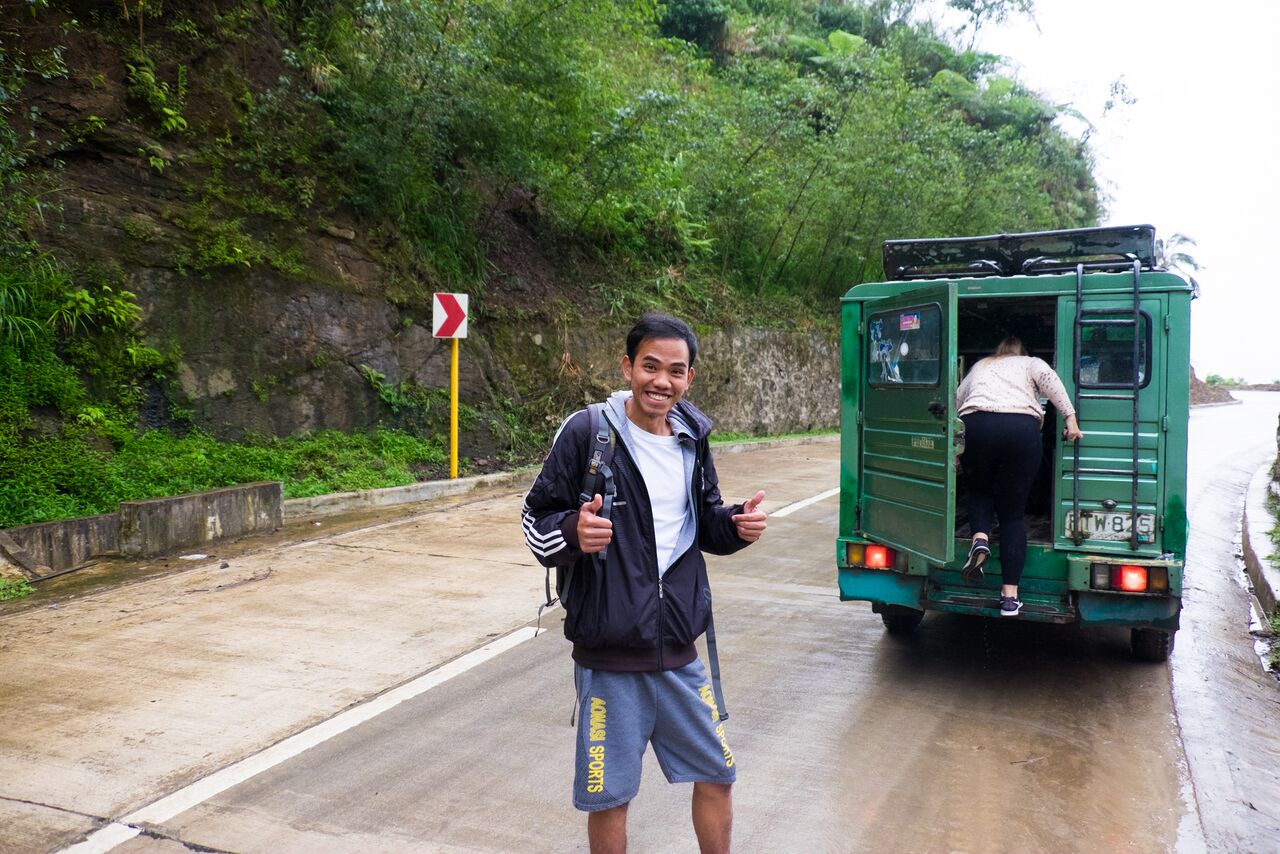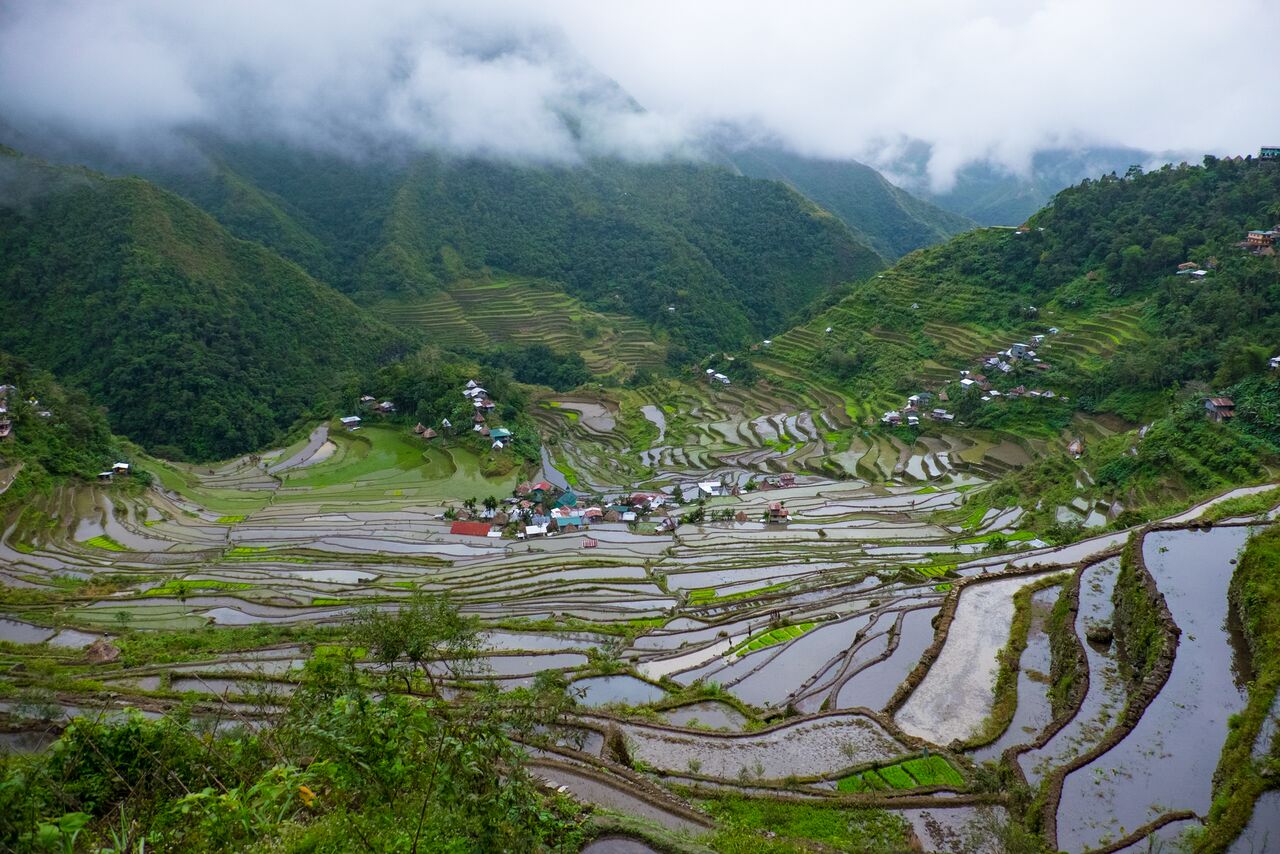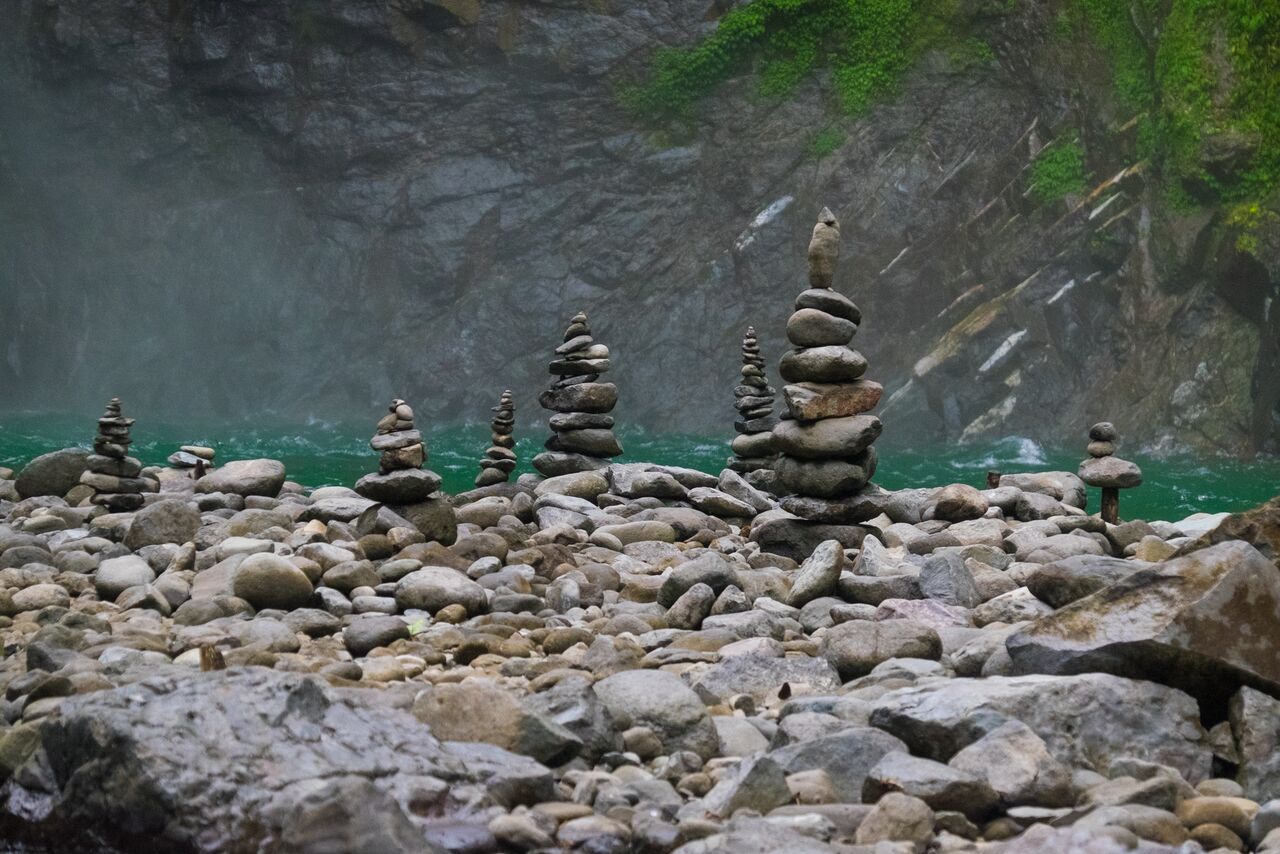Manila to Banaue and the Batad Rice Terraces
The Omayami Trans bus terminal is just 13km from Ninoy Aquino airport. A simple 35 minute (350peso) journey by taxi. Unless you are making it in rush hour - as we were - in which case I was advised the estimate is "between an hour an infinity." So far so good.
"Why does everyone believe their traffic is uniquely terrible?" I thought. I've experienced Athens, London, Bangkok, Beijing all in rush hour. Sure the traffic is bad, but really nothing to write home about.
All of my first messages home to friends and family were about Manilas traffic.
SUV's intermingle with "trikes" - motorbikes with bolted on 3 seater sidecars, the predominent form of short distance transport in the country - along with bicycles and the odd death defying pedestrian. Road signals, junctions, rights of way, even which side of the road to drive on, are all up for negotiation.
The 200 metres from the airport to the first real road took around 20 minutes and that was one of the faster stretches. I didn't really understand what gridlock meant until Manila.
The toll roads (skyways) are faster where available, although joining it in the wrong direction is inadvisable and, as it turns out, can add an extra hour as you try to join it returning the other way.
Three hours later, having resigned ourselves to missing our bus to Banaue and probably having to skip the rice terraces completely, we made it to the bus terminal with minutes to spare and were waved onto the bus where our reserved seats were waiting.
Apparently my concern that not arriving the perscribed forty minutes in advance to exchange our vouchers for tickets would lead to us losing them was a little westanised. We were by no means the last to arrive and in the event of overflow, there were plastic picnic chairs to put in the aisle.
Safely ensconced in a seat which I would only later find reclined in accordance with the busses current acceleration, armed with the six litres of water I insist on carrying everywhere with me, we were off.
The ten hour overnight bus journey to Banaue was almost exactly as comfortable as you'd expect a ten hour overnight bus journey along increasingly rural roads to be. We both got some sleep and I lost count of how many times I apologised to the gentleman behind me for reclining into his lap as we accelerated away from a junction.
The bus arrives around seven AM and goes straight to a restauraunt overlooking Banaue town which serves breakfast, doubling up as tourist information and a spot to book tours, drivers and guides.
The view from breakfast was spectacular as the morning cloud filled the valley and gradually lost its daily battle with the sun, revealing the plunging valleys which make the area so suitable for rice farming.

Having heard from several sources that the rice paddies at Batad were significantly better preserved than those at Banaue itself, we decided to go straight there and visit the Banaue paddies later if time.
Time was of the essence given that we were returning on the 7PM bus that night so we opted to hire a private driver and guide so as to leave immediately. We paid 5.2k pesos for the two of us having negotiated very little so better deals may be available. Apparently the opening bid for a group is 2k per person. YMMV.
Batad itself is not accessible by road, our driver took us an hour further West where the road ends. Our guide - who was wonderful, a local university student who works as a guide on the weekends - took us the rest of the way on foot.

Batad itself is about a thirty minute hike from the nearest road, after that we hiked for around an hour down through the rice paddies themselves. This is the key reason for hiring a guide, the path is a public right of way but the rice paddies themselves are private property so without a guide you're on shaky ground attempting this alone. There's also a huge risk of damaging the paddies - a UNESCO listed site and the main source of the local families food - by stepping in the wrong place so doing this alone shouldn't be considered an option.
As we climbed down through some of the oldest working rice paddies in the world, our guide explained the growing cycle of rice and pointed out where rice had been newly planted and where it was being picked, separated out and re-planted having completed the first stage of growing.

We learned to our - or at least my - surprise that all of the rice grown in Batad is for consumption by the families which grow it. It is also entirely organic, with no chemical fertalisers or pestisides being used. The only fetaliser used is made by fermenting rice waste, food scraps and other organic matter in one of the fallow paddies. This means that unlike commercial rice growing operations, where paddies may bear three crops per year, there is a single yearly harvest to preserve the nutrients in the soil.
Each family will own around five paddies and a complicated system of inheritence and obligation ensures that the paddies continue to be used to provide for the family as a whole.
Working our way down through the rice paddies was by no means a stroll, requiring some fairly intricate balancing along narrow boundaries and more stairs than I care to remember. This was followed by another thirty minute hike to the famous Tappiya waterfall.

This is definitely a hike not a walk. While it is without question worth it, by the time we reached the waterfall both of our legs were shaking uncontrollably. By the time we'd hiked back up afterwards, we were almost incapable of speech. Even our guide fell asleep on the drive back to Banaue.
Our driver and guide were poised to continue to show us the better known rice paddies of Banaue. As tropical rain had now set in, visbility was sub ten metres and we were confident we'd already seen the most spectacular part, we elected to call it a day and retired to a local hostel for some much needed nourishment and a hot shower before catching the return bus to Manilla.
Arriving at the bus terminal in Manila at 5AM could definitely be a little intimidating. The usual band of taxi drivers wait around the door as you leave, offering imaginative fares to the airport, cheap hotels and the usual patter which is somehow identical in every city world over.
In practice they were some of the least pushy people of this kind I've encountered, generally moving on after at most two or three rebuffs.
I cannot recommend enough purchasing a local SIM card at the airport (Globe, 800 pesos, 4GB data for 30 days) and installing the "Grab" taxi app. Grab is Uber in the Philippines (Uber also has a presence although is less prevalent). You can pay with cash but get a fixed fare. We consistently paid 300-400 pesos to the airport and never had any challenges to the fixed fare. Several other travellers we met had paid 600-800 pesos to regular taxis even after negotiating.
Particularly when exhausted after flights or day trips, not having to worry about negotiating fares and communicating locations can be a godsend. For anyone worrying that this loses something of the authenticity of travelling fear not, there are no such apps available in the smaller cities and towns so there it's a return to wits and street smarts. Or very expensive taxis.
Get Email Updates
Follow me on Twitter @talkingquicklyto get notified when I post something new about travel, end up sleeping on a bench or need helping making bail...